The third edition of the Carl Nielsen International Chamber Music Competition was a reminder of just how wondrous Nielsen’s string quartets are, says Andrew Mellor

Discover more Featured Stories like this in The Strad Playing Hub.
Read more premium content for subscribers here
Copenhagen is even more nuts about Carl Nielsen than usual right now. Four days after the third Carl Nielsen International Chamber Music Competition ended on 16 April, the Danish National Symphony Orchestra launched a six-concert festival of the composer’s music conducted by Fabio Luisi, its Italian chief whose unlikely love affair with Nielsen has taken even him by surprise.
Much of this activity is underpinned by Denmark’s state broadcaster DR, whose feeling for classical music stands in such stark contrast to the BBC’s seemingly pathological fear of it. DR televised Luisi’s festival and live-streamed every note of the competition from the second round onwards – the latter constituting three full days of often challenging chamber music (it’s all available to rewatch on YouTube). The 16 competing wind quintets and string quartets performed across three locations, starting at DR’s Jean Nouvel-designed concert venue on the edge of the capital before moving to the Royal Danish Library on the harbourside and ending up, for the finals, at the hall DR built for its own musicians during the Second World War. It is now the concert hall of the Royal Danish Academy of Music, which took ownership of the iconic ‘radio house’ in 2008.
This quadrennial competition was inaugurated in 2015, its first winners in the string category, the Arod Quartet, going on to great things. Copenhagen has become something of a hot spot for emerging quartets in the intervening years thanks largely to Tim Frederiksen, chamber music guru at the Royal Danish Academy of Music and the man who assembled the Danish and Nightingale quartets. He had two horses in this particular race: the Absalon Quartet (eliminated after the first round) and the Novo Quartet, now studying with Johannes Meisl at the Vienna University for Music and Performing Arts (it took second prize).

The competition is funded by the Nielsen estate and exists to widen appreciation of his music, which is obligatory in two of the three rounds. Even for Nielsen nuts, it’s good to be reminded of just how wondrous the composer’s four string quartets are. On the first day of string heats, the Vivace Quartet from Beijing took on the Andante sostenuto movement from his Third Quartet op.14 – the first time a movement from that piece has been played at the event (though it has always been on the menu). It is an astonishing stretch of music from a composer who always managed to push the envelope despite remaining true to relatively simple artistic ideals.
Still, his music can feel like an alien aesthetic. According to stage compère Rie Koch, some competing quartets from outside Denmark reported that the composer’s singular approach only made sense after they’d arrived in the country and tasted its culture, a fascinating idea and a believable one (there were ensembles from the UK, China, Germany, Switzerland and Poland). Undoubtedly, the Novo Quartet most obviously took ownership of its compatriot’s music in his First Quartet op.13. It was also the only string ensemble in the competition to play standing up, delivering surges of energy in Mendelssohn’s op.13 in A minor in the second round.
One non-Danish ensemble that had the benefit of some history with Nielsen was the London-based Kleio Quartet. This group took part in the 2019 edition of the competition, when it failed to progress past the first round (two members have since been replaced). Now, as then, the Kleio players opted for movements from Nielsen’s op.13 and made a strong impression, giving us plenteous digging emphases – just not necessarily in the places the Danish audience might have expected them. It was the Haydn, though, that really shone in the first round: a performance of the composer’s op.76 no.2 that had bags of humour and charm, with sure phrasing, abundant shifts in lighting and the sort of tight ensemble blend that is in fashion.
Nielsen’s idiosyncrasies held no fear for the Kleio players and they tore into the final Allegro inquieto
Alongside the Novo Quartet, the Kleio’s most serious competitor of the eight emerged as the Hana Quartet from Munich. The players’ Nielsen (movements from the Second String Quartet op.5, which was written in Germany) was no less impressive and full of verve. Throughout the competition, this ensemble embodied that old adage that true pleasure is a serious business. It rotated its violinists but retained an extraordinary sense of blend that might have come as much from similar-sounding instruments as from like-minded musicians.
The Hana’s Mendelssohn op.44 no.1 in the second round put them, arguably, in pole position. Despite fast speeds and propulsive joy, it was strong on nuance. The direct comparison was with Schumann’s op.41 no.2 (dedicated to Mendelssohn) from the Kleio Quartet, a performance that captured the work’s combination of whimsy and fervour and proved that the ensemble could look and sound, on stage, like a quartet with nothing to prove and plenty to say. All six ensembles in the second round offered strikingly different interpretations of the commissioned work, Gustav Bjerre’s String Quartet in One Movement.

The three finalists were obliged to pair a complete Nielsen quartet with one by either Beethoven or Schubert. All went for Beethoven. The Novo Quartet plumped for op.59 no.2, but the Hana gambled in opting for the mighty op.132. The musicians’ distinct blend helped them in the mammoth slow movement, in which they found their own delicate balance, thus avoiding the need to manufacture profundity. But perhaps this was a work in progress rather than a performance to wow a jury that included Clive Greensmith and Sergei Bresler.
While the Hana players reprised their Nielsen op.5 for the final, the Kleio Quartet returned to his op.13. Again, Nielsen’s idiosyncrasies apparently held no fear for the Londoners and they tore into the final Allegro inquieto, its dramatic melody firing up first violinist Yume Fujise, clearly the ensemble’s talisman. For Beethoven, they brought us op.59 no.3 with its immense fugal finale, in which accents were judiciously placed even at hurtling speed. Here the ensemble’s physical movement was even more apparent – as well as its confidence, its distinct sound and its own idea of that sound and where it might be taken.
‘It was a new thing for us to play in such a big hall,’ Fujise told me afterwards, ‘so we had to become bigger – as big as the hall.’ And their affinity with Nielsen is real. Not only is their violist Jenny Lewisohn half-Danish, but also their first concert as victors – booked long before they arrived in Copenhagen – was Nielsen at London’s Danish Church. ‘We love him!’ declared Fujise of the composer. They sure did him proud.
Read: That festival feeling: Postcard from Odense
Read: Kleio Quartet wins at the Carl Nielsen International Chamber Music Competition
Discover more Featured Stories like this in The Strad Playing Hub.
Read more premium content for subscribers here
The number one source for playing and teaching books, guides, CDs, calendars and back issues of the magazine.
In The Best of Technique you’ll discover the top playing tips of the world’s leading string players and teachers. It’s packed full of exercises for students, plus examples from the standard repertoire to show you how to integrate the technique into your playing.
The Strad’s Masterclass series brings together the finest string players with some of the greatest string works ever written. Always one of our most popular sections, Masterclass has been an invaluable aid to aspiring soloists, chamber musicians and string teachers since the 1990s.
This year’s calendar celebrates the top instruments played by members of the Australian Chamber Orchestra, Melbourne Symphony, Australian String Quartet and some of the country’s greatest soloists.
Reference
openhagen is even more nuts about Carl Nielsen than usual right now. Four days after the third Carl Nielsen International Chamber Music Competition ended on 16 April, the Danish National Symphony Orchestra launched a six-concert festival of the composer’s music conducted by Fabio Luisi, its Italian chief whose unlikely love affair with Nielsen has taken even him by surprise.Much of this activity is underpinned by Denmark’s state broadcaster DR, whose feeling for classical music stands in such stark contrast to the BBC’s seemingly pathological fear of it. DR televised Luisi’s festival and live-streamed every note of the competition from the second round onwards – the latter constituting three full days of often challenging chamber music (it’s all available to rewatch on YouTube). The 16 competing wind quintets and string quartets performed across three locations, starting at DR’s Jean Nouvel-designed concert venue on the edge of the capital before moving to the Royal Danish Library on the harbourside and ending up, for the finals, at the hall DR built for its own musicians during the Second World War. It is now the concert hall of the Royal Danish Academy of Music, which took ownership of the iconic ‘radio house’ in 2008.This quadrennial competition was inaugurated in 2015, its first winners in the string category, the Arod Quartet, going on to great things. Copenhagen has become something of a hot spot for emerging quartets in the intervening years thanks largely to Tim Frederiksen, chamber music guru at the Royal Danish Academy of Music and the man who assembled the Danish and Nightingale quartets. He had two horses in this particular race: the Absalon Quartet (eliminated after the first round) and the Novo Quartet, now studying with Johannes Meisl at the Vienna University for Music and Performing Arts (it took second prize).
The competition is funded by the Nielsen estate and exists to widen appreciation of his music, which is obligatory in two of the three rounds. Even for Nielsen nuts, it’s good to be reminded of just how wondrous the composer’s four string quartets are. On the first day of string heats, the Vivace Quartet from Beijing took on the Andante sostenuto movement from his Third Quartet op.14 – the first time a movement from that piece has been played at the event (though it has always been on the menu). It is an astonishing stretch of music from a composer who always managed to push the envelope despite remaining true to relatively simple artistic ideals.Still, his music can feel like an alien aesthetic. According to stage compère Rie Koch, some competing quartets from outside Denmark reported that the composer’s singular approach only made sense after they’d arrived in the country and tasted its culture, a fascinating idea and a believable one (there were ensembles from the UK, China, Germany, Switzerland and Poland). Undoubtedly, the Novo Quartet most obviously took ownership of its compatriot’s music in his First Quartet op.13. It was also the only string ensemble in the competition to play standing up, delivering surges of energy in Mendelssohn’s op.13 in A minor in the second round.One non-Danish ensemble that had the benefit of some history with Nielsen was the London-based Kleio Quartet. This group took part in the 2019 edition of the competition, when it failed to progress past the first round (two members have since been replaced). Now, as then, the Kleio players opted for movements from Nielsen’s op.13 and made a strong impression, giving us plenteous digging emphases – just not necessarily in the places the Danish audience might have expected them. It was the Haydn, though, that really shone in the first round: a performance of the composer’s op.76 no.2 that had bags of humour and charm, with sure phrasing, abundant shifts in lighting and the sort of tight ensemble blend that is in fashion. Alongside the Novo Quartet, the Kleio’s most serious competitor of the eight emerged as the Hana Quartet from Munich. The players’ Nielsen (movements from the Second String Quartet op.5, which was written in Germany) was no less impressive and full of verve. Throughout the competition, this ensemble embodied that old adage that true pleasure is a serious business. It rotated its violinists but retained an extraordinary sense of blend that might have come as much from similar-sounding instruments as from like-minded musicians. The Hana’s Mendelssohn op.44 no.1 in the second round put them, arguably, in pole position. Despite fast speeds and propulsive joy, it was strong on nuance. The direct comparison was with Schumann’s op.41 no.2 (dedicated to Mendelssohn) from the Kleio Quartet, a performance that captured the work’s combination of whimsy and fervour and proved that the ensemble could look and sound, on stage, like a quartet with nothing to prove and plenty to say. All six ensembles in the second round offered strikingly different interpretations of the commissioned work, Gustav Bjerre’s String Quartet in One Movement.
The three finalists were obliged to pair a complete Nielsen quartet with one by either Beethoven or Schubert. All went for Beethoven. The Novo Quartet plumped for op.59 no.2, but the Hana gambled in opting for the mighty op.132. The musicians’ distinct blend helped them in the mammoth slow movement, in which they found their own delicate balance, thus avoiding the need to manufacture profundity. But perhaps this was a work in progress rather than a performance to wow a jury that included Clive Greensmith and Sergei Bresler.While the Hana players reprised their Nielsen op.5 for the final, the Kleio Quartet returned to his op.13. Again, Nielsen’s idiosyncrasies apparently held no fear for the Londoners and they tore into the final Allegro inquieto, its dramatic melody firing up first violinist Yume Fujise, clearly the ensemble’s talisman. For Beethoven, they brought us op.59 no.3 with its immense fugal finale, in which accents were judiciously placed even at hurtling speed. Here the ensemble’s physical movement was even more apparent – as well as its confidence, its distinct sound and its own idea of that sound and where it might be taken. ‘It was a new thing for us to play in such a big hall,’ Fujise told me afterwards, ‘so we had to become bigger – as big as the hall.’ And their affinity with Nielsen is real. Not only is their violist Jenny Lewisohn half-Danish, but also their first concert as victors – booked long before they arrived in Copenhagen – was Nielsen at London’s Danish Church. ‘We love him!’ declared Fujise of the composer. They sure did him proud.

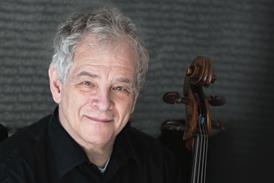
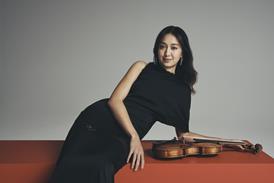



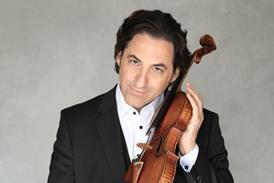
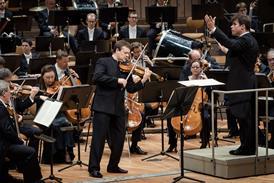




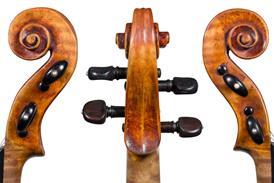


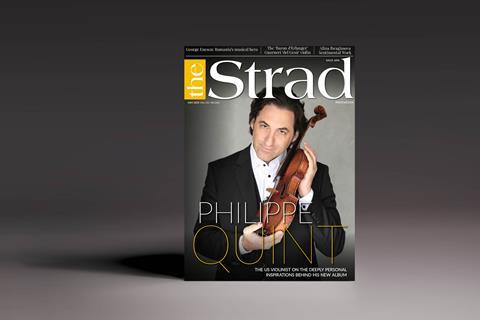









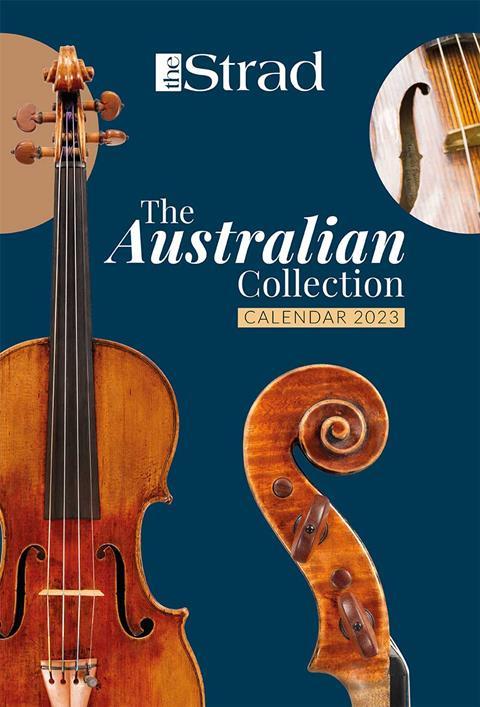
































No comments yet